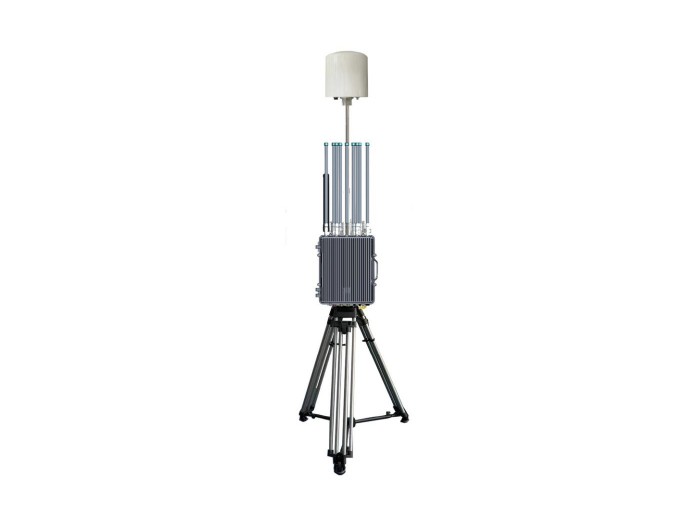Anti UAV Jamming System 5G: Enhancing Security in the Era of Connected Drones
With the rapid proliferation of unmanned aerial vehicles (UAVs), commonly known as drones, industries and government agencies face increasing security challenges. As 5G technology accelerates UAV capabilities — enabling real-time data transmission, precise control, and enhanced drone networking — the risk of unauthorized drone incursions into sensitive areas grows substantially. Organizations require robust solutions like the anti UAV jamming system 5G to safeguard restricted airspaces, critical infrastructure, and private properties from potential threats posed by rogue drones.
In today’s hyper-connected world, traditional anti-drone measures struggle to keep pace with sophisticated UAVs leveraging 5G for extended range and complex missions. This article explores the fundamentals of anti UAV jamming systems integrated with 5G technology, their benefits, real-world applications, and emerging trends. Whether you are a security professional or a business investing in drone countermeasures, understanding these systems is essential for maintaining operational integrity and regulatory compliance in the 5G era.
Understanding Anti UAV Jamming Systems in a 5G-Enabled Environment
Anti UAV jamming systems are electronic countermeasure (ECM) devices designed to detect, disrupt, and neutralize unauthorized drones. Traditional jamming systems typically interfere with UAV communication signals such as GPS, radio frequency (RF), or control channels. However, with drones adopting 5G connectivity, jamming solutions must evolve to address new communication paradigms and security vulnerabilities inherent in 5G networks.
5G technology offers UAVs high bandwidth, low latency, and network slicing capabilities, making drones more agile and harder to intercept. In response, modern anti UAV jamming systems leverage advanced signal analysis and adaptive jamming techniques to target 5G-enabled drones without affecting legitimate 5G users nearby.
For example, a study by the European Union Agency for Cybersecurity (ENISA) highlights that 5G-enabled drones can utilize network slicing to reduce detection risk. Therefore, anti UAV jamming systems targeting these drones apply AI-driven pattern recognition and frequency-selective jamming to efficiently disable hostile UAV operations while complying with 5G network standards.
Key Features of 5G-Compatible Anti UAV Jamming Systems
- Multi-band Signal Detection: Ability to scan and identify UAV signals across both proprietary and 5G spectrum bands.
- Adaptive Jamming: Dynamic power and frequency modulation to disrupt targeted UAV uplink/downlink communications seamlessly.
- Minimal Collateral Interference: Designed to avoid jamming non-threatening 5G devices within the operational environment.
- Real-Time Threat Assessment: Integration with drone detection radar and optical sensors to confirm UAV presence before activation.
Benefits of Integrating 5G Technology in Anti UAV Jamming
The integration of 5G technology profoundly enhances the effectiveness of modern anti UAV jamming systems. Below are some of the primary benefits:
Enhanced Detection and Tracking Accuracy
Utilizing 5G’s network infrastructure, anti UAV jamming systems gain access to high-resolution telemetry and positional data, improving real-time tracking of hostile drones. For instance, airports adopting 5G-powered drone detection reported a 40% increase in interception success rates due to faster identification and engagement of UAV targets.
Improved Jamming Precision
5G’s ultra-low latency allows anti UAV jamming devices to execute rapid frequency hopping and adaptive power control, which reduces energy consumption and minimizes disturbance to civilian 5G communications. This precision jamming is crucial in urban environments where connectivity is critical and interference can have cascading effects.
Scalability and Network Integration
The 5G architecture enables scalable deployment of anti UAV jamming systems integrated with broader security networks. These systems can communicate across distributed sensor arrays, command centers, and law enforcement databases, allowing coordinated drone threat mitigation over large geographic areas.

Practical Applications and Industry Use Cases
Anti UAV jamming systems equipped with 5G capabilities find application across multiple critical sectors:
Critical Infrastructure Protection
Facilities such as power plants, oil refineries, and telecommunications hubs use 5G-enabled anti UAV jamming to prevent drones from conducting espionage, sabotage, or unauthorized surveillance. For example, a major energy facility in Germany installed an integrated detection and jamming solution resulting in a 75% reduction of UAV intrusions within the first year of operation.
Airspace Security at Airports
Airport authorities combat unauthorized drone presence that disrupts flight operations using 5G-capable jamming systems. By leveraging real-time 5G data streams combined with radar and thermal imaging, airports can quickly isolate and neutralize UAVs, enhancing passenger safety and minimizing flight delays.
Event and Cultural Site Security
Mass gatherings and cultural events are vulnerable targets for UAV-related threats. 5G integrated anti drone systems provide organizers with the ability to manage airspace, prevent drone-related privacy breaches, and ensure compliance with aviation regulations.
Military and Law Enforcement
National defense operations increasingly incorporate 5G network-based counter-UAV systems to safeguard military bases and urban environments against hostile drone use. Law enforcement agencies utilize these systems for tactical deployments during high-risk operations requiring airspace control.
Key Recommendations for Implementing Anti UAV Jamming Systems 5G
- Conduct Comprehensive Site Assessments: Evaluate the local spectrum environment and drone threat profiles to select suitable 5G-compatible jamming solutions.
- Integrate Multi-Sensor Detection: Combine radar, RF, optical, and acoustic sensors with 5G-based jamming to improve detection accuracy and reduce false positives.
- Ensure Regulatory Compliance: Align anti UAV jamming deployment with local and international spectrum regulations to avoid legal challenges.
- Prioritize Minimal Impact Designs: Choose systems with adaptive, frequency-selective jamming to protect legitimate 5G communications and avoid service disruptions.
- Leverage Expert Consultation: Contact our specialists for tailored system design and ongoing operational support to maximize security outcomes.
Conclusion: Defending the Future of Airspace with Anti UAV Jamming System 5G
As drones continue to integrate 5G connectivity, ensuring airspace security demands innovative, intelligent countermeasures. Anti UAV jamming systems utilizing 5G technology represent the frontline defense against unauthorized UAV incursions, providing unmatched accuracy, scalability, and operational safety. Our company leads the industry in delivering cutting-edge solutions tailored to your security needs.
Want to protect your critical assets from evolving drone threats? Visit our website now or contact us for a free consultation and discover how our 5G-enabled anti UAV jamming systems can safeguard your operations effectively.

















